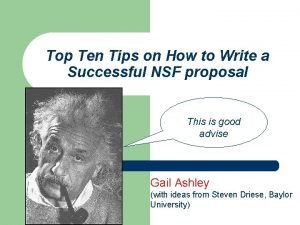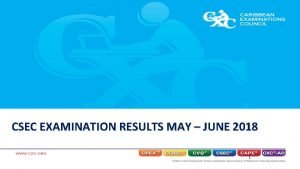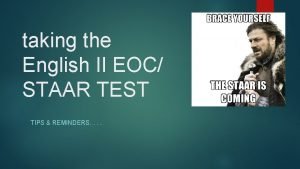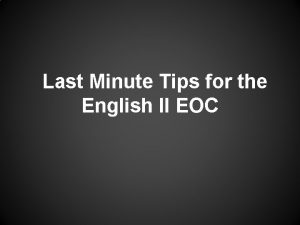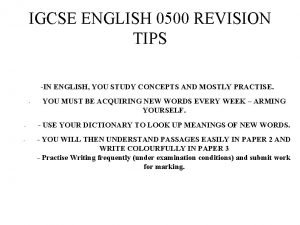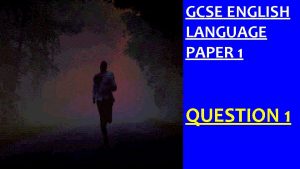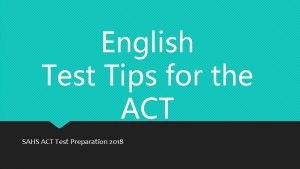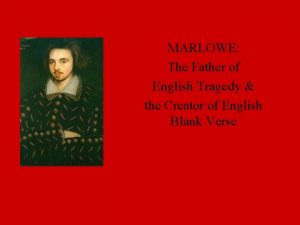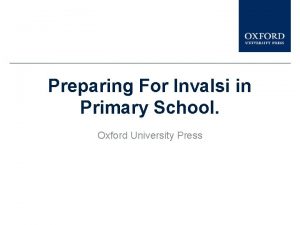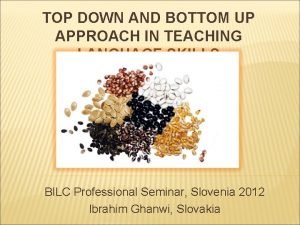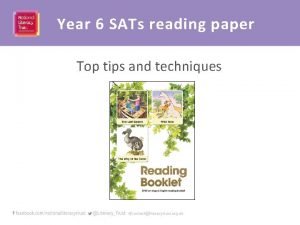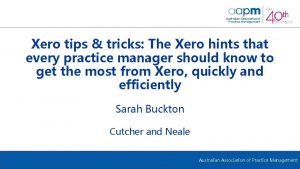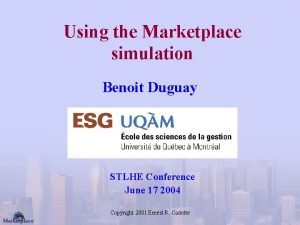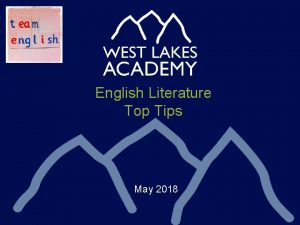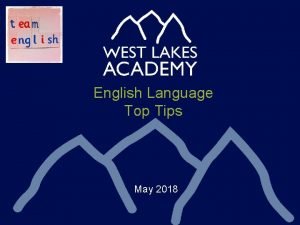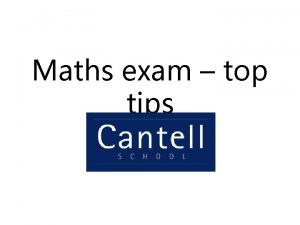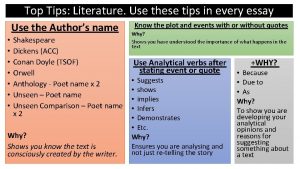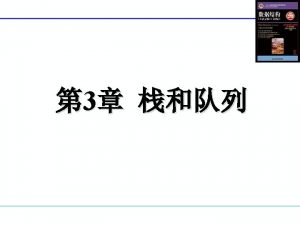English Literature Top Tips May 2018 English Literature















- Slides: 15

English Literature Top Tips May 2018

English Literature Paper 1 Section A: Shakespeare Macbeth and Romeo and Juliet Section B: 19 th Century novel A Christmas Carol, The Strange Case of Dr Jekyll and Mr Hyde and Frankenstein 0 Give yourself 1 ak minutes to bre ept, down the conc ct and annotate extra e else in consider wher n the text you ca reference Persona l respon se – what does th e concep t/idea m to you? ean

English Literature Paper 2 Section A: Modern Text An Inspector Calls and Lord of the Flies Section B: Poetry Power and Conflict Section C: Unseen Poetry p Ensure you kee focused on the question e throughout – b task specific Unseen poetry – have a strategy of how to approa ch Verb ch oice? N. eon lines? S emanti c field?

What examiners have been told to focus on… AO 1 37. 5% AO 2 42. 5% What themes and ideas • Language/Form/Structure mean to you as a reader. - Anything the writer has used to create meaning for • How you respond to the example: characterisation, question, looking at: setting, plot development. - Essay skills - What you say and how you • Subject terminology – not say it just technical terms, it is - References also the language you would use when writing an • Textual references essay: character, irony, - You must use quotations form, places, setting, plot. from extract/poem It is how you use these - You don’t have to use things to help write your quotations for whole text answer. reference – it is what points you select that are important. • AO 3 15% • If you answer the question you are addressing context. • - Other factors to consider: Context was written in Context of setting (time, location, social and cultural structures Genre Different audiences/readers -

Mark scheme – what does it mean? Level 6 key words: • Convincing • Critical analysis • Explores These responses tend to: • Focus on the fact the text is a conscious construct • Argument driven by a clear point of view about the text – this must shape your response – keep linking back • Use references from the text to help develop argument • Detailed and fine grained analysis • Look closely at the effects of writer’s choices and link them to interpretations • Explore lots of ideas in terms of the writer’s purpose

Level 6 – what does it look like? Clear introduction that presents a clear opinion/argument on the question. It also clearly explains the writer’s intention.

Alternative interpretations on methods allow this student to be considered ‘developed’ even in the first part of their response. Keep focused on the question and your opinion

Mark scheme – what does it mean? Level 5 key words: • Thoughtful • Developed • Alternative These responses tend to: • Think about the ideas presented in the question from different perspectives, consider more than one interpretation or reading of the text • Be more tentative to show thoughtful consideration • Focus in a thoughtful way on specific writer’s methods, linked to interpretations • Keep focused on: themes and ideas, writer’s purpose and intention and context

Level 5 – what does it look like? This is the student’s final paragraph. She wrote 3 different paragraphs on the text in a ‘thoughtful’ manner and so this was considered to be a ‘developed’ response. Examines methods and their effects on the audience

Keeps focused on the question and their opinion by linking to the writer’s intention.

Mark scheme – what does it mean? Level 4 key words: • Clear understanding • Explain These responses tend to: • Keep focused on question • Use effective references • Explain the effects of the writer’s method on the text – making sure you keep focused that it has been consciously written The writer creates a sense of … in order to … • Link effects to the writer’s purpose • Show your own understanding of themes and ideas

Level 4 – what does it look like?


In a nutshell, you must: • Always refer to the writer – it shows you understand that the text has been constructed for a particular reason and that it isn’t real! If you don’t do this you limit yourself to only achieving level 2/3 • Have an opinion on the task right from the start – you must have a line of argument • Make sure your interpretations link back to the writer’s intention and your opinion • Ensure you analyse – examine precise details of the text • Provide alternative interpretations/effects – if you don’t do this you limit yourself to level 4 • Be tentative – it shows you are being ‘thoughtful’

Checklist: 1. Introduction: • Define the idea/concept/theme • Make your argument/opinion clear and focused • Link to the writer's intentions 2. Response: P: make your point ensuring you focus on what the question is asking you to explain I: explain the writer’s intention for presenting the idea in this way E: use a relevant and precise quotation D: explain what your evidence literally tells you – what does it denote? M: analyse multiple methods (language – key words, form, structure) and link back to your opinion/point E: link the methods to the effect on the reader/audience and to your overall opinion/argument L: link your analysis back to the writer's intentions and your opinion
 Top ten tips
Top ten tips Que letra continua m v t m j
Que letra continua m v t m j Cxc 2018 results
Cxc 2018 results Einsteinufer 43
Einsteinufer 43 No reason to lol staar answer key
No reason to lol staar answer key English eoc tips
English eoc tips Igcse english revision
Igcse english revision Language
Language Act english tips
Act english tips Hci design patterns
Hci design patterns Who is father of english drama
Who is father of english drama Ready for invalsi oxford
Ready for invalsi oxford Top down process of reading
Top down process of reading Year 6 tips
Year 6 tips Xero practice manager demo
Xero practice manager demo Price rebate marketplace simulation
Price rebate marketplace simulation
